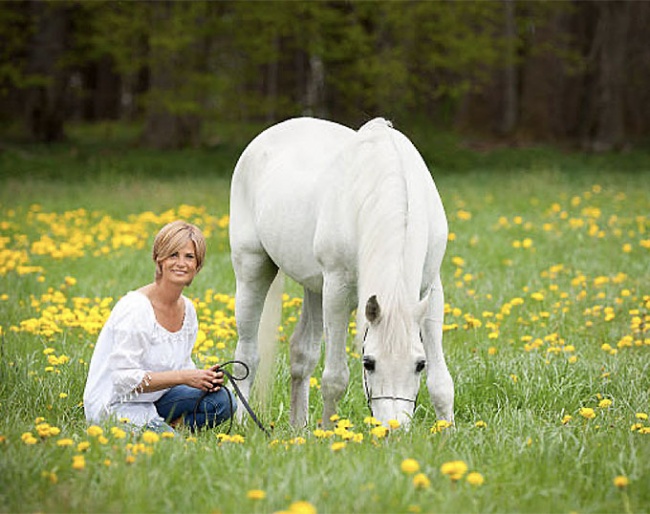
An in-depth dive into the waters of introspection and proprioception
If you've ever taken a tumble while riding, you might unknowingly carry some lingering effects, even if you're pain-free and riding well. Each fall tends to leave behind traces of tension or less-than-ideal compensatory habits. This is more or less the same for bad experiences like learning under extreme pressure or discomfort.
When our bodies face injury, trauma, shock, or fear, our brain leaps into action, working to protect us. It deploys strategies like muscle spasms to stabilize the affected area, avoidance of certain movements, or, in cases of fear, heightened vigilance. These responses trigger automatic patterns within us, governed by the sympathetic nervous system (fight/flight/freeze).
Usually, these compensations hang around until they're no longer needed. Our brain genuinely aims to assist us, but sometimes, abrupt impacts or strong emotion can fossilize these patterns, especially from the brain's perspective. That's where the Feldenkrais Method steps in with its unique effectiveness.
Feldenkrais Awareness Through Movement® lessons communicate with the brain through its natural medium: movement. Through gentle, mindful movement exercises, we offer the brain new information, potential options, and updates, encouraging it to consider a "reset."
If left unaddressed, imbalances that our brain has been managing can manifest as various discomforts or undesirable changes in behavior. Light manifestations may include riding off-kilter, persistent one-sidedness, or irritating issues like neck or shoulder discomfort. Many riders eventually contend with chronic back or hip pain. Furthermore, these struggles can be internalized, as seen with unresolved fear. This internal conflict can manifest as breathing difficulties, heat regulation problems, or unwelcome muscle contractions (think stiff back, hips, or overly strong hands). When in doubt, take a good look in the mirror, your horse is your mirror.
Interconnectedness
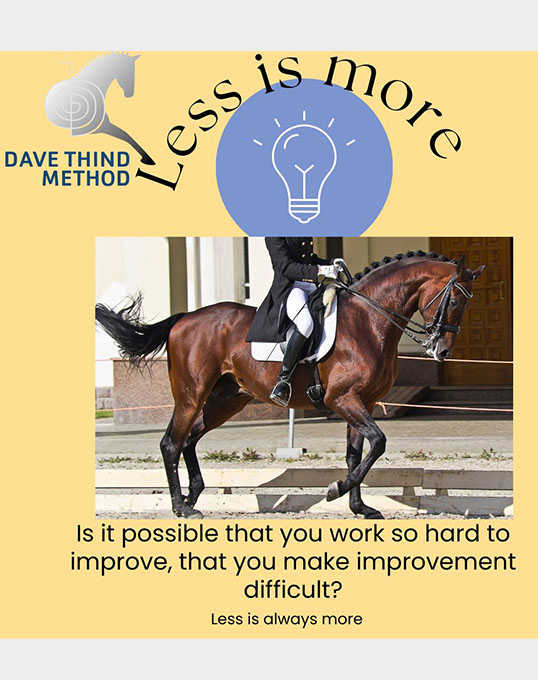
Harmonizing with Ease
In the Feldenkrais Method®, we steer our students towards prioritizing ease as the most efficient route to improvement. At its core, this approach revolves around operating within your comfort zone, your "easy range." By doing so, we can gradually expand this range, rather than coercing ourselves into more strenuous, and sometimes painful, positions in the hope that they will eventually become effortless and comfortable. It's vital to acknowledge that our nervous systems naturally incline toward ease. Our objective is to create conditions where learning and progress become the norm, an adaptable skill set applicable across diverse contexts. We uphold the principle that commencing within your easy and comfortable range offers a relatively accessible pathway to learning. Embrace what feels effortless and comfortable, allowing it to evolve and develop organically from there.
Photo: Keeping things fun aids in learning. German Team Rider, Carina Scholz
Unlocking Creative Solutions
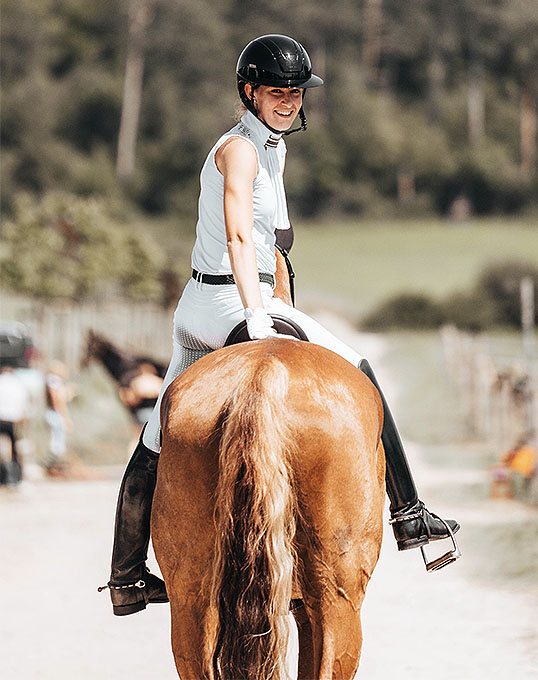
German squad rider Carina Scholz
The Mystery of Pain
Much of what we perceive as pain doesn't originate directly from the injured area. Our experience of pain is a product of how our brain processes signals from our body. In essence, when you sense pain in your shoulder, it's not the shoulder itself that's in pain. Rather, your shoulder transmits signals to your brain, signaling that something is amiss, and your brain deciphers these signals as pain.
When you encounter pain, you're essentially witnessing your brain's response—be it significant or subtle—to the signals sent by the rest of your body.
To coax your brain into a less vigilant state, where it doesn't immediately interpret signals as trouble in, for instance, your shoulder, you must initiate a reset by moving in ways that suggest pain-free possibilities. It's a case of "No pain, no pain," as opposed to the traditional "no pain, no gain."
Your Brain’s Symbolic Map of Yourself, and Your Capabilities
"We act in accordance with our self-image," and that can be clarified and improved through movement lessons. The homunculus, an important concept within neuroscience and neurology, it represents a symbolic map within the brain, offering a unique perspective on how our bodies are represented in our own minds. It depicts what humans would look like if our parts grew in proportion to how much we used them, and more particularly, the awareness around them and how we use those parts to sense and become even more aware.
It is most often portrayed by a comical or even creepy humanoid fictional figure, a depiction to show how our bodies are represented within the brain, the weighted significance of our sensory receptors. Within this cerebral cartography, distinct brain regions are allocated to specific body parts, creating a sensory and visual representation of our physical selves nestled within the confines of our brain.
What makes the homunculus even more intriguing is its capacity for change, adapting its figurative map based on our life experiences. For instance, if we were to peek into a baby's brain, we would encounter a rather comical rendition: a colossal mouth dominating the landscape, reflecting its vital role in early life.
Handsy Riders
Giant hands also make frequent appearances, shedding light on why many novice riders tend to be overly "handsy" when first learning riding.
What would today’s version of your homunculus look like? And your horse? Both together?
Breaking Free from Hidden Compensations and Discovering the Power of a Neurological Reset
Here’s One of Many Ways to Help you Reset
In Just a Few Days, Your Opportunity for a Quick and Easy Seat and Position Reset Begins, Live on Zoom.
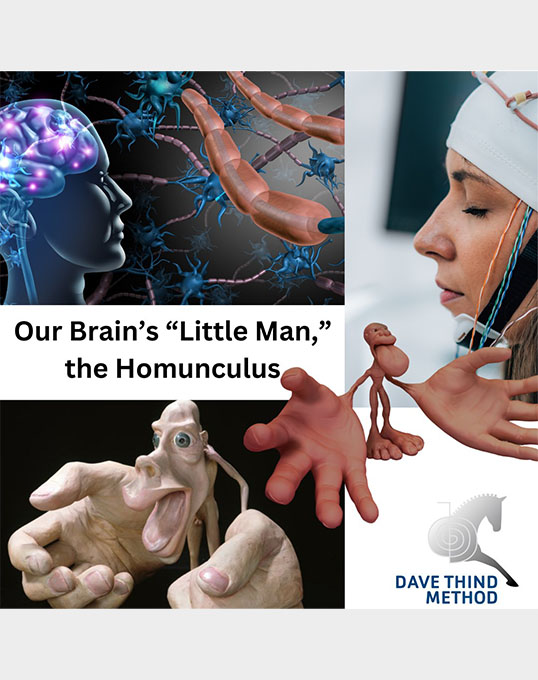
The 6-part, step by step transformation eliminates compensation patterns and rebuilds upon a solid foundation, a “reset button” for restoring natural and healthy functional movement patterns. This is all accomplished from home, in just 1-hour a week, for 6 weeks. Students have the option to join live classes or participate through video recordings. With a learning-by doing approach, students will explore the fascinating subject of their own personal (often subconscious) movement patterns, as well as making lasting improvements to baseline “auto-pilot” habits and old compensation patterns. “When you know what you’re doing, you can do what you want.”
The Fall Wheel Alignment Curriculum: Each lesson is aimed at enhancing different aspects of your riding experience. Curated and led by biomechanics specialist, Guild Certified Feldenkrais Practitioner® and certified German F.N “Trainer A” - Dave Thind. Class will be every Monday starting October 2 until November 6, live on zoom, 12 PM EST/18:00 Europe time, with lifetime access to the recordings.
Secure Your Spot Here >>> https://www.davethindmethod.com
More on the Feldenkrais Method®
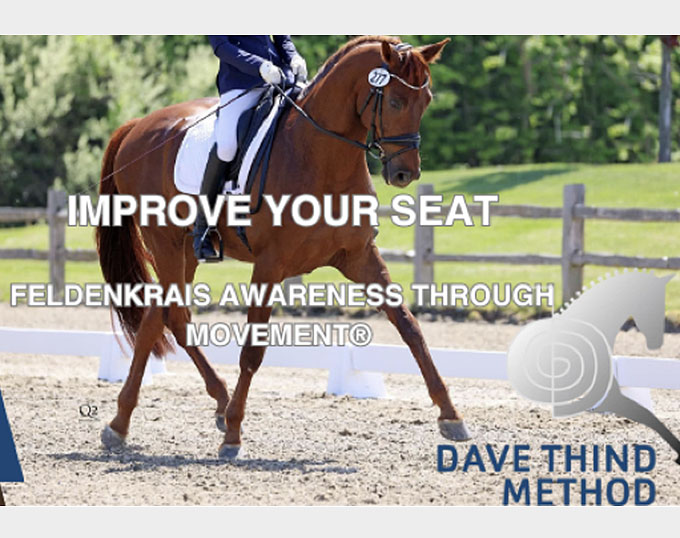
“The aim of the Feldenkrais Method is a person that is organized to move with minimum effort and maximum efficiency, not through muscular strength, but through increased consciousness of how movement works.”
Feldenkrais for Dressage:
DTM offers an array of learning Feldenkrais learning tools. The DTM Fall Wheel Alignment series is a specific set of classes designed to provide a comprehensive yet incredibly quick approach to improving your riding. Designed as a foundational reboot, similar to what Dave Thind employed this summer to help top riders in Germany including German National Team Riders and Olympians.
“The Feldenkrais Method® is a way of using movement to improve the function of the nervous system and the brain. We're not just working on the body, we're working on the brain-body connection. We're helping people to move more efficiently, more easily, with less effort. The Feldenkrais Method® and Awareness Through Movement® does not require any knowledge of anatomy or biomechanics, we do the movement lessons to automatically make improvement using neuro-reprogramming. A Reset!,” proclaimed Thind.
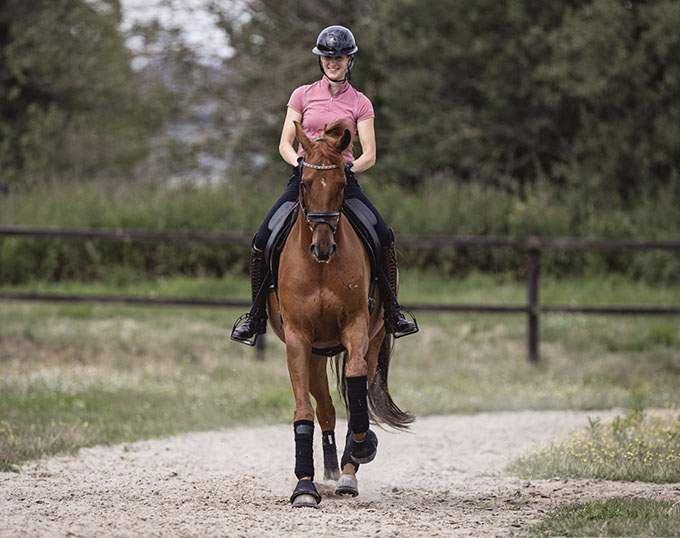
“Dave is an expert on schooling riders in person, and also with his online Feldenkrais classes. He is one of the best trainers in the world for teaching the position of good riding, and ultimately bringing two bodies together in harmony. He is brilliant in teaching the correct rider’s position in a friendly and positive way. I suggest that many of us should use the opportunity to train with Dave.” -- Christoph Hess
“Working with Dave was amazing. Starting with I normally wake up with some stiffness in my back, and I did not the next day! In my riding, I was able to easily keep my shoulders level, my "shorter" leg now equally long and I easily found my eyes up, much better head-carriage and spinal decompression, giving me a much straighter and more efficient position. I was really happy about this! Highly recommended.” -- Carina Sholz, German Olympic Squad Rider
Join easily at https://www.davethindmethod.com